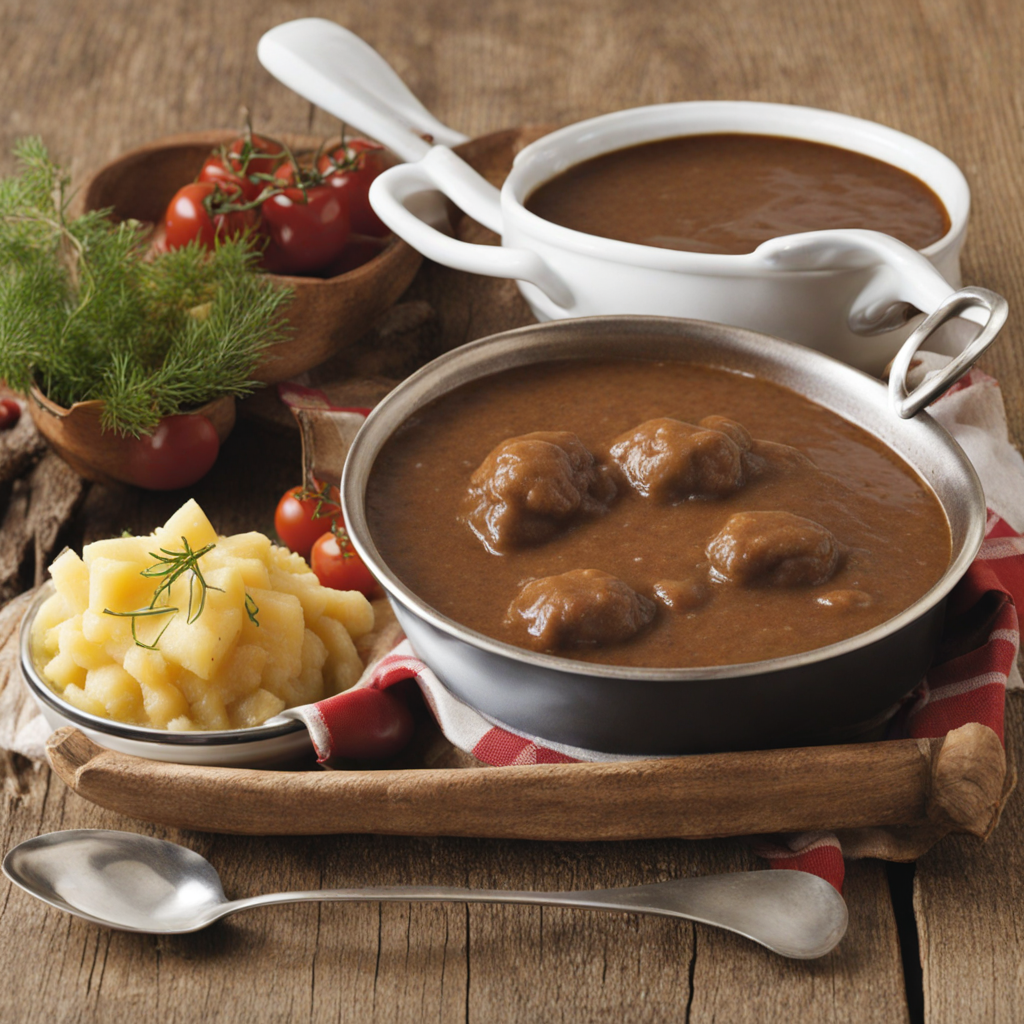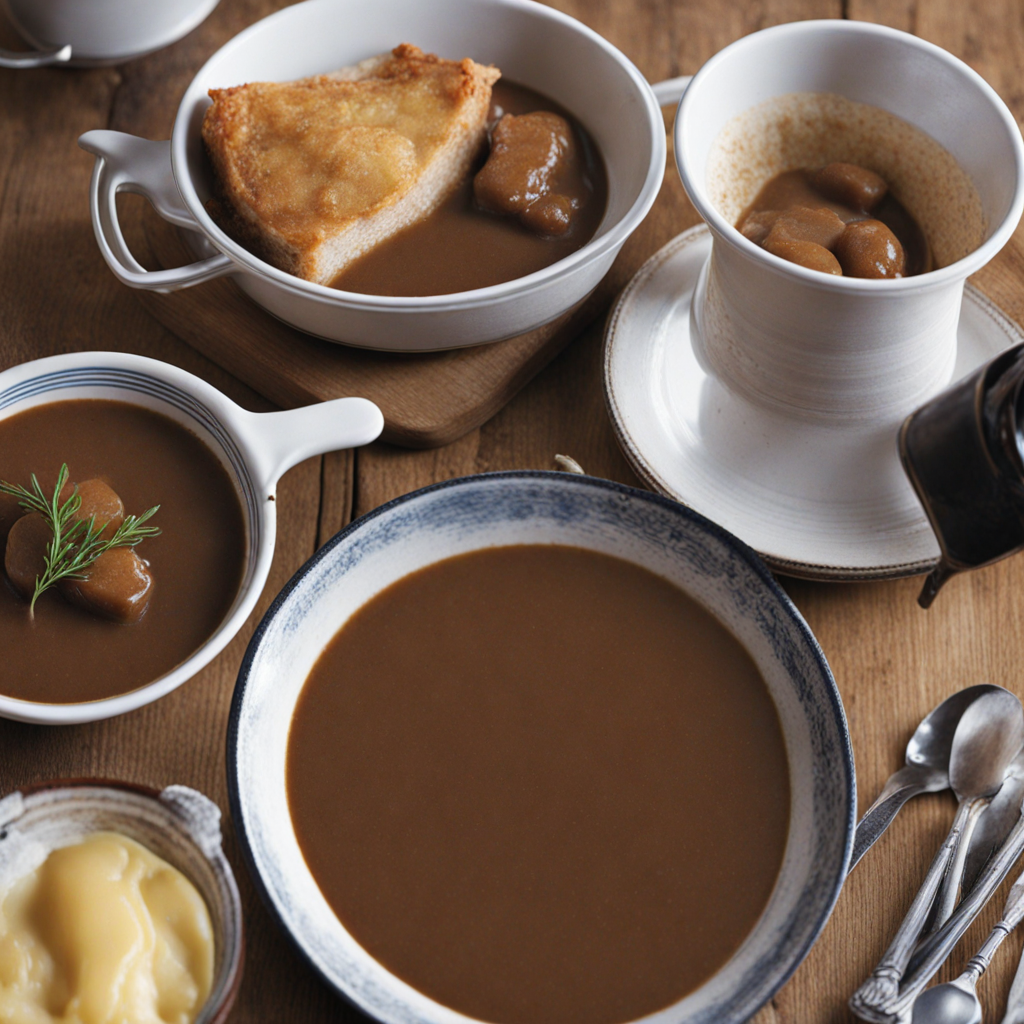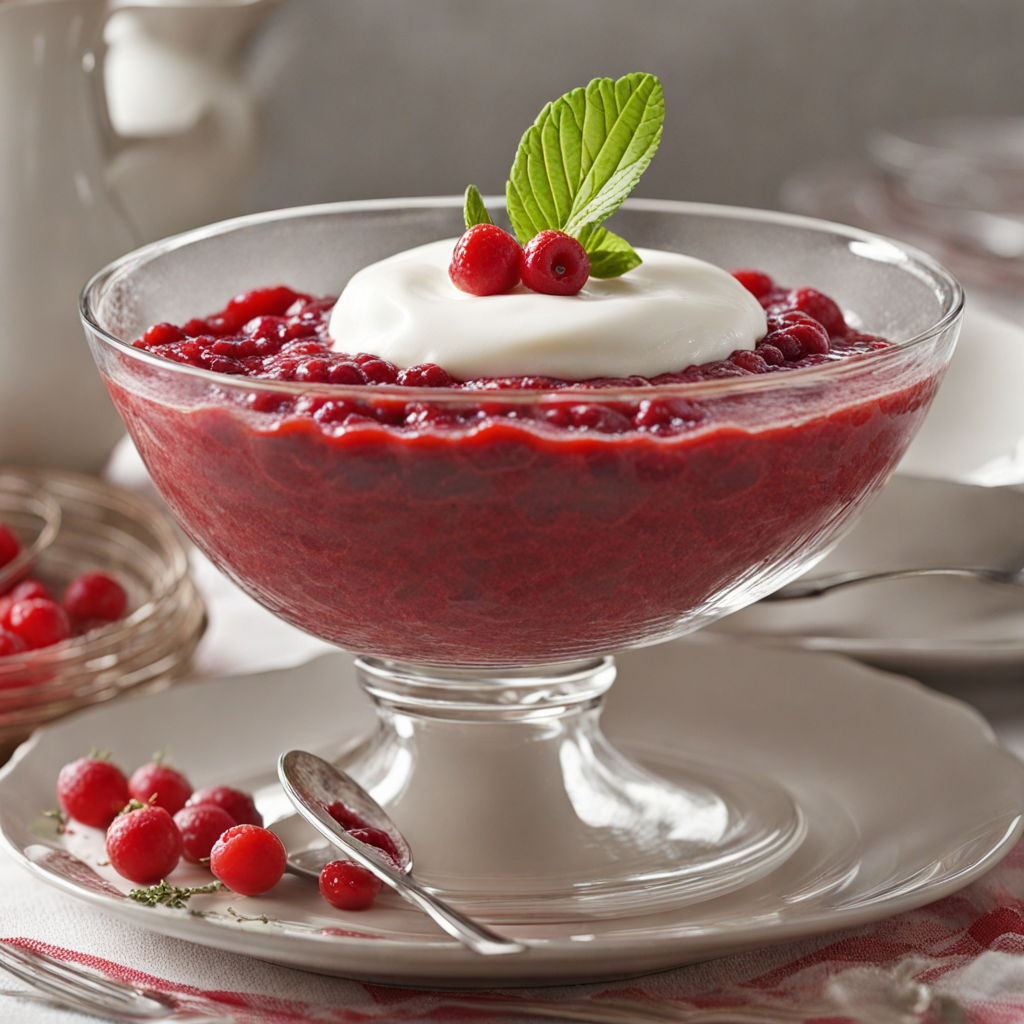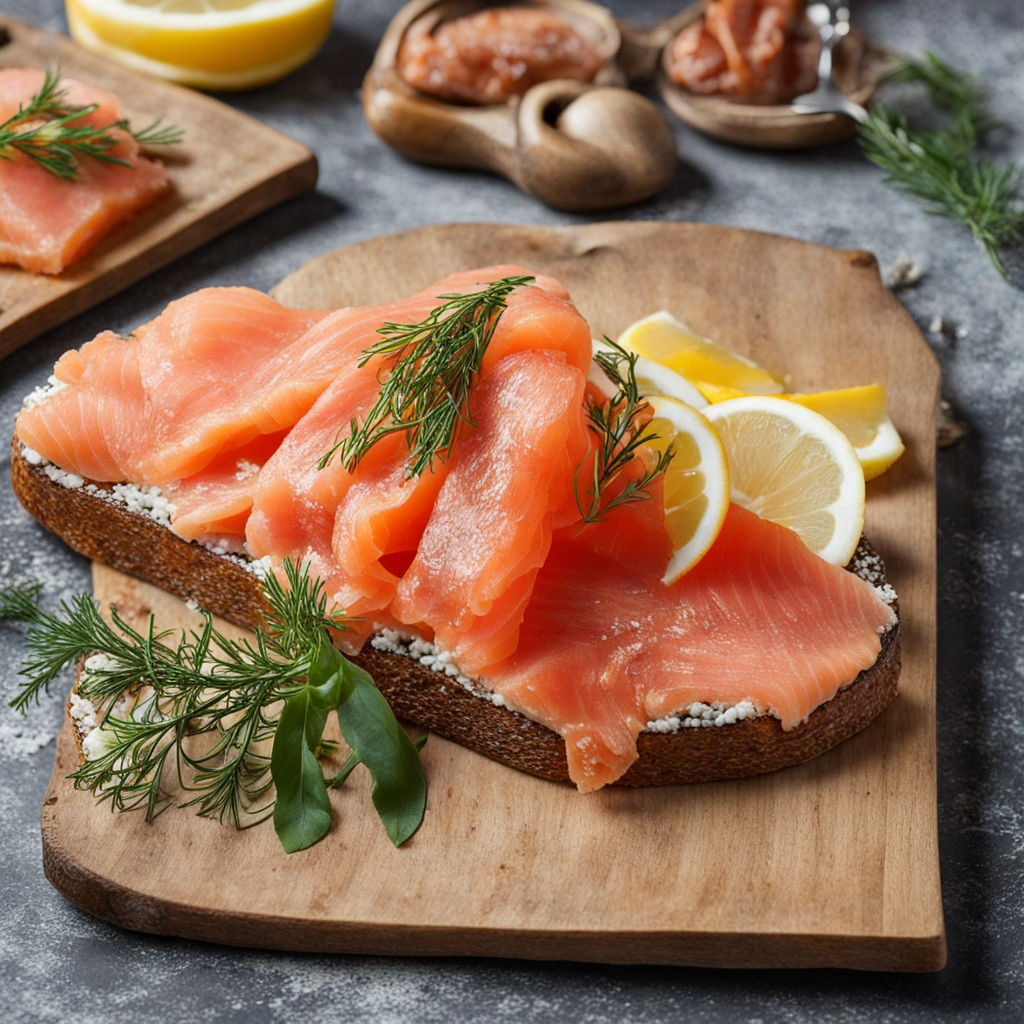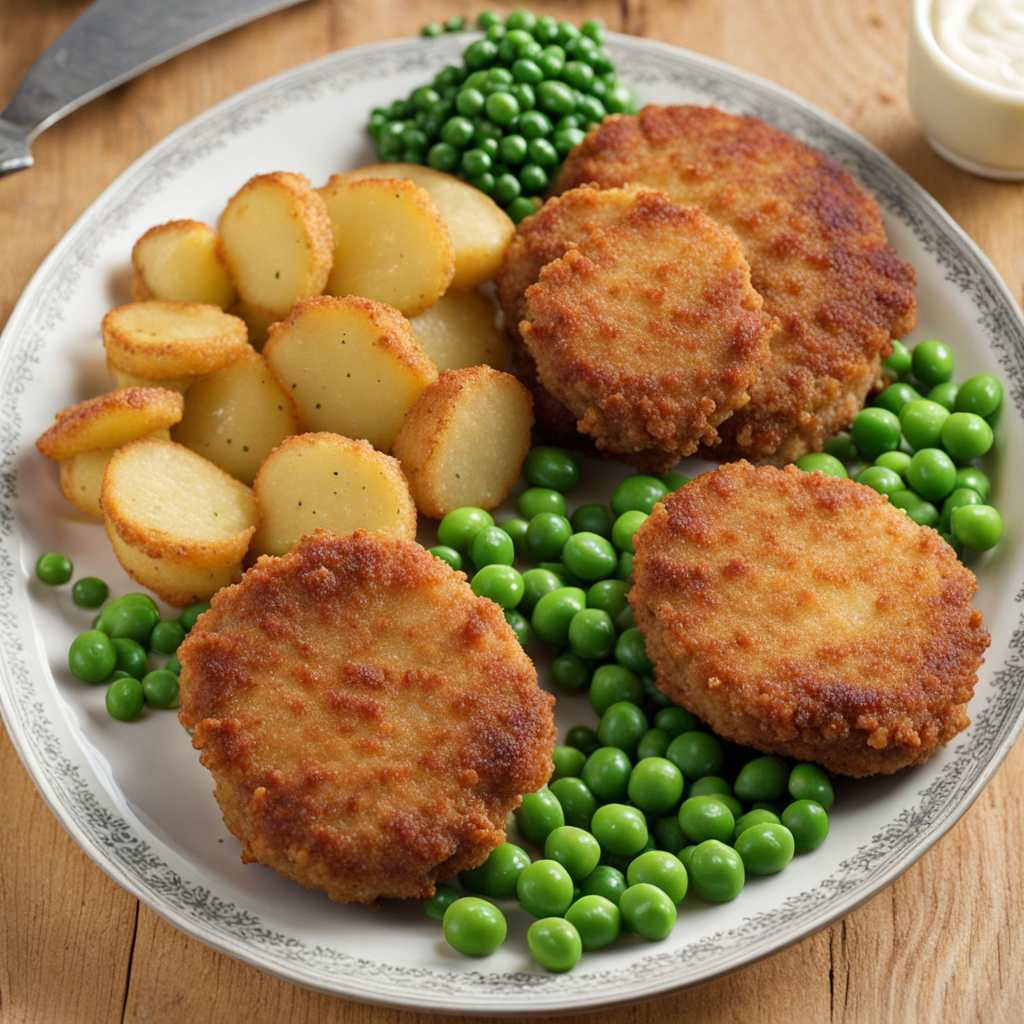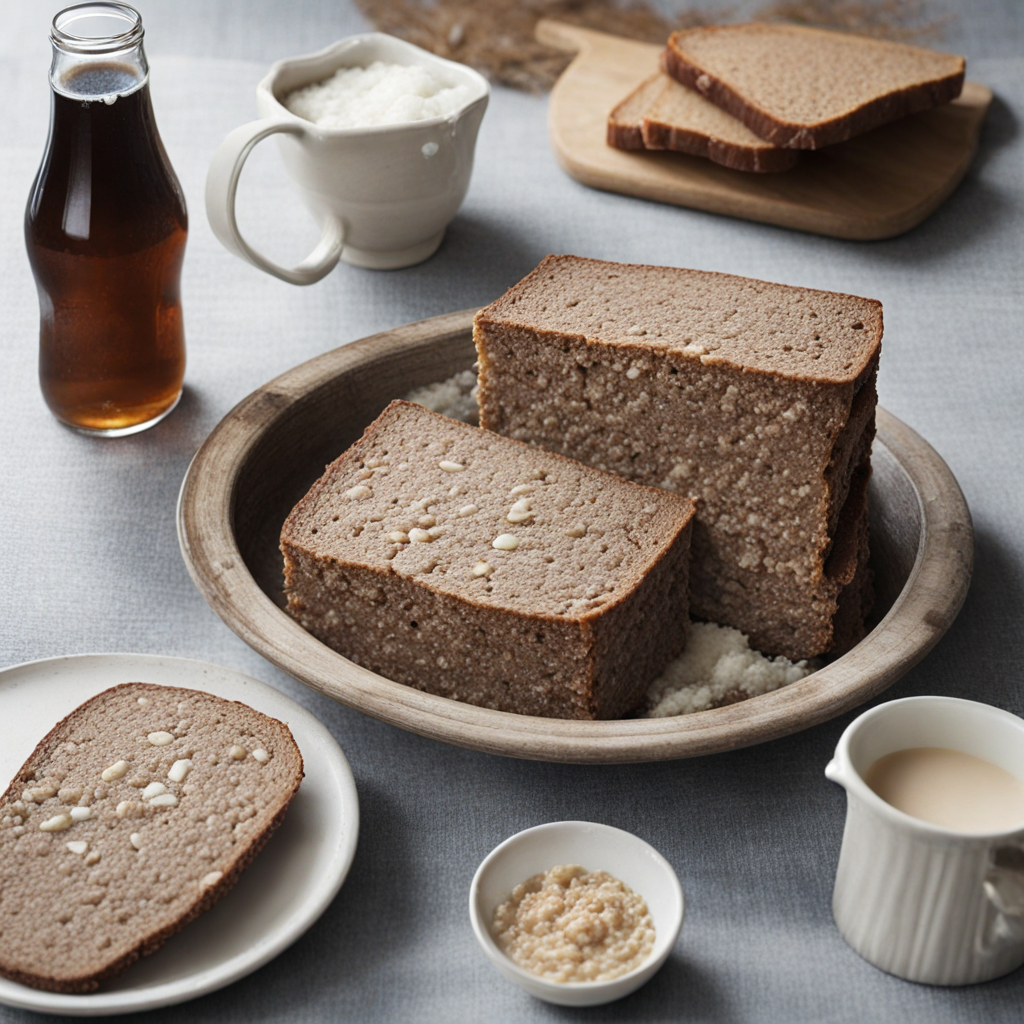Brun Sovs
Brun Sovs, or brown sauce, is a staple in Danish cuisine that embodies the heart of comforting home-cooked meals. This rich, velvety sauce is typically made by combining meat drippings with a roux of flour and butter, resulting in a deep, caramelized color and an umami-packed flavor profile. The sauce is often enriched with beef or vegetable stock, and sometimes a splash of red wine or a hint of vinegar is added to elevate its complexity. It serves as the perfect accompaniment to traditional Danish dishes, enhancing the natural flavors of roasted meats, potatoes, and seasonal vegetables. The preparation of Brun Sovs is considered an art in itself, requiring patience and attention to detail. The key lies in the careful browning of the flour and butter, which creates a nutty aroma and lays the foundation for the rich taste. Many families have their own cherished recipes that have been passed down through generations, each adding a unique twist to this classic sauce. Whether it's a touch of cream for added richness or a dash of mustard for a subtle tang, these variations are what make Brun Sovs special in every household. Pairing Brun Sovs with dishes like frikadeller (Danish meatballs) or stegt flæsk (crispy pork belly) creates a harmonious balance of flavors that is both hearty and satisfying. The sauce not only enriches the meal but also provides a comforting, nostalgic experience that resonates with Danish heritage. For anyone seeking to explore this delightful taste, Brun Sovs offers a unique glimpse into the warmth of Danish culinary traditions, inviting you to savor the delicious simplicity and depth of flavor that this sauce brings to the table.
How It Became This Dish
The History of Brun Sovs: A Danish Culinary Tradition #### Origins of Brun Sovs Brun sovs, or brown sauce, is a staple in Danish cuisine, renowned for its rich flavor and versatility. Its origins can be traced back to the culinary practices of the 19th century, a time when Denmark experienced significant social and agricultural changes. The sauce evolved as a practical method of utilizing meat drippings, a common ingredient in traditional Danish cooking. As the Danish people began to embrace a more agrarian lifestyle, sauces like brun sovs became essential to the national palate. The name "brun sovs" translates directly to "brown sauce," and it is made from the fond or drippings left in the pan after roasting meat, usually beef or pork. The process involves deglazing the pan with water or stock, often combined with flour to thicken it into a smooth, glossy sauce. The result is a deeply flavored sauce that complements a variety of dishes, particularly meat and potatoes, which are central to Danish meals. #### Cultural Significance Brun sovs holds a special place in Danish culture, serving as a symbol of comfort and home-cooked meals. It is often associated with family gatherings and festive occasions, such as Christmas and Easter, where traditional dishes like roast pork or duck are served alongside the sauce. The preparation of brun sovs is often a communal activity, passed down through generations, making it a vessel of culinary heritage and familial bonding. In Denmark, food is more than sustenance; it is an integral part of social life and identity. Brun sovs is emblematic of the concept of "hygge," a Danish term that embodies coziness, comfort, and togetherness. The sauce is often made with care and attention, reflecting the values of simplicity and quality in Danish cooking. It is a unifying element in meals, bringing together various components on the plate while enhancing flavors. #### Development Over Time The development of brun sovs can be seen as a reflection of broader changes in Danish society and cuisine. In the early 20th century, as refrigeration became more common, the preparation of sauces began to shift. Home cooks started to experiment with different ingredients, and variations of brun sovs emerged, incorporating cream, herbs, and spices to create more complex flavors. This evolution mirrored the changing Danish palate, which began to embrace a wider array of culinary influences. As globalization took hold in the late 20th century, Danish cuisine began to incorporate elements from other cultures. While traditional recipes remained popular, chefs and home cooks started to innovate by introducing ingredients like soy sauce, balsamic vinegar, and even chili, leading to new interpretations of brun sovs. This adaptability has allowed the sauce to remain relevant in contemporary Danish cooking, even as culinary trends evolve. In recent years, there has been a resurgence of interest in traditional Danish foods, driven by a desire for authenticity and sustainability. As a result, many chefs are revisiting classic recipes, including brun sovs, often emphasizing locally sourced ingredients and traditional techniques. This movement has reinforced the sauce's status as a beloved element of Danish cuisine, reconnecting modern Diners with their culinary roots. #### Brun Sovs Today Today, brun sovs is a ubiquitous feature on Danish dinner tables, transcending age and social class. It is a versatile condiment that can accompany a variety of dishes, from the traditional roast to vegetarian options, such as lentil loafs or hearty vegetable stews. The sauce is often served with "kartofler" (boiled or roasted potatoes), which soak up the rich flavors, creating a satisfying and complete meal. In Danish restaurants, brun sovs is often a highlight of the menu. Chefs take pride in their methods of preparation, with many opting for homemade versions to showcase the depth of flavor that comes from using quality meat drippings and carefully balanced seasonings. Contemporary interpretations might include variations like adding red wine or herbs, but the essence of the sauce remains rooted in tradition. Furthermore, the rise of food blogs and social media has contributed to a renewed interest in brun sovs, with home cooks sharing their recipes and personal twists on the classic sauce. This digital revival has helped young Danes connect with their culinary heritage, fostering a sense of pride in traditional cooking methods. #### Conclusion Brun sovs is more than just a sauce; it is a testament to Danish culinary history and culture. Its origins reflect a time when resourcefulness in the kitchen was paramount, while its evolution showcases the adaptability of Danish cuisine in the face of changing social and culinary landscapes. Today, brun sovs remains a beloved dish that captures the spirit of Danish home-cooking, embodying the values of comfort and community. As it continues to evolve, it serves as a delicious reminder of Denmark's rich culinary heritage. Whether enjoyed on a special occasion or a casual weeknight dinner, brun sovs holds a cherished place in the hearts and homes of the Danish people, ensuring its legacy endures for generations to come.
You may like
Discover local flavors from Denmark


